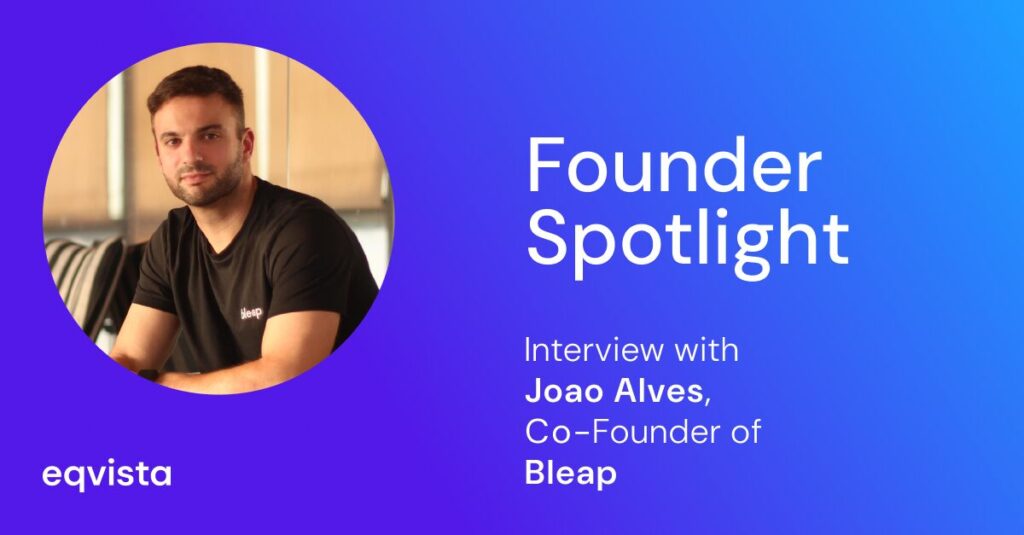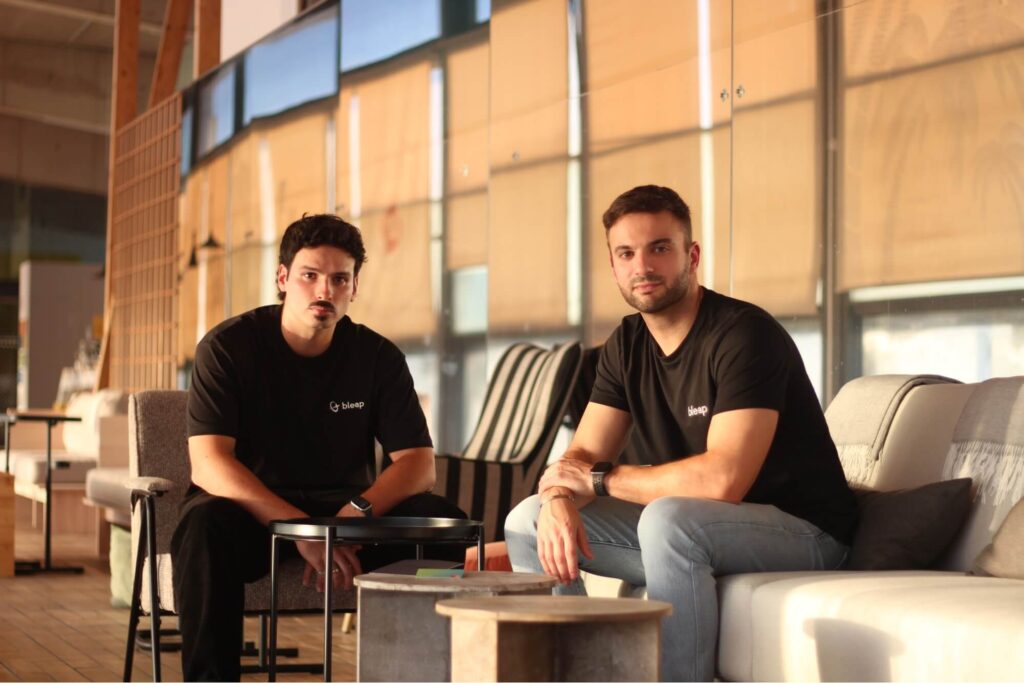Founder Spotlight Interview With Joao Alves, Co-Founder of Bleap
Welcome to the latest edition of Founder Spotlight featuring a fintech entrepreneur, Joao Alves, the co-founder of Bleap, which is described as the world’s first Web3-connected debit card. Alves is driving a new wave of decentralized finance innovation, seeking to build trust and expand the market for crypto payments in a regulated European environment.
Bleap focused on integrating stablecoins into payments by enabling users to spend stablecoins directly without conversions or intermediaries. Bleap partners with Mastercard to bring stablecoins to mainstream fintech, allowing users to control their funds while seamlessly using Mastercard’s global payment network. This collaboration aims to make stablecoin payments a regular part of daily transactions, including shopping, savings, and international transfers.

Hi Joao, welcome to the Founder Spotlight! Could you take us through your background and experience building a fintech product?
Before founding Bleap, I worked at Revolut, where I joined the card payments department in July 2019. My role involved overseeing all aspects of Revolut’s card programs, from procurement and distribution of cards to integration with Apple Pay, Google Pay, Visa, and Mastercard. I was responsible for managing settlements, foreign exchange processes, and overall card functionality within the app. Additionally, I supported the launch of various card programs, including debit, credit, prepaid, business, and buy-now-pay-later cards, across multiple regions, such as Australia, New Zealand, the US, Canada, Brazil, and Mexico.
What is Bleap’s core mission, and how does it differentiate itself from other fintech solutions currently available?
Bleap aims to prove that fintech can be built better on-chain. Our mission is to provide a fully non-custodial financial solution where users control their own funds on the blockchain while benefiting from the advantages it offers. These include access to higher risk-adjusted yields in DeFi, instant and free global transactions, while still having access to seamless integration with traditional financial infrastructure like Apple Pay, Google Pay, Visa, and Mastercard. Essentially, we are bridging the gap between decentralized blockchain systems and centralized financial networks, enabling real-time, cost-effective interactions between the two.

How do you ensure that Bleap’s features align with the needs and preferences of your target users?
We rely on a mix of intuition and direct user feedback. From the beginning, we’ve maintained a close relationship with early adopters through our Telegram community, where we engage with users in real-time. By continuously gathering feedback, we can iterate on our product based on what users truly need and refine our vision for what an on-chain fintech product should look like.
Given the importance of security in fintech, what measures are being implemented to protect user data and assets in Bleap?
Security is a top priority for us. We bring in talent with extensive backgrounds in fintech and banking to ensure that we implement best-in-class security standards. Our approach includes bank-grade encryption across all services, ensuring that user funds and data remain protected at the highest level.
In your opinion, how will blockchain technology reshape the future of banking and financial services?
Blockchain has the potential to be the next evolutionary step in financial systems. One of its key advantages is its decentralized nature, which eliminates reliance on any single entity, such as a central bank or payment network. In traditional financial systems, each country has its own payment infrastructure, making cross-border integration challenging. Blockchain, however, provides a neutral and global alternative that can be adopted without requiring any single country to relinquish control.
Another significant improvement is in transaction efficiency. Traditional payment networks operate on two separate flows: information exchange and actual fund transfers, which can take days to settle. Blockchain transactions, on the other hand, are final and instantaneous, reducing settlement times and transaction costs. This has the potential to significantly enhance the speed, accessibility, and affordability of financial services worldwide.
What new and interesting trends are happening in financial technology, especially with cryptocurrencies, and how is blockchain technology used?
One of the most exciting trends in blockchain is real-world asset tokenization. Stablecoins have already demonstrated the power of blockchain for global payments, making cross-border transactions significantly easier and more efficient. Now, we’re seeing increased tokenization of assets like stocks and real estate, which simplifies ownership transfers and enhances market transparency.

For instance, if land registries were stored on-chain, property sales could be executed as easily as sending a transaction in a digital wallet, eliminating bureaucratic hurdles and inefficiencies. Additionally, tokenized stocks could enable 24/7 trading with lower intermediary costs, making financial markets more accessible and efficient. The potential for blockchain in this space is vast, and we are only scratching the surface.
How do you navigate the regulatory challenges of operating as a Virtual Asset Service Provider (VASP) in Europe?
The regulatory landscape for VASPs in Europe, particularly under MiCA, is well-defined and relatively straightforward to follow. The European Union has done an excellent job in creating clear, comprehensive guidelines. The main challenge, however, lies in how different countries implement these regulations at the local level. Some jurisdictions are still catching up, which can create uncertainty. Fortunately, the grandfathering period until 2026 provides businesses with ample time to align with MiCA requirements as they evolve.
What were some of the biggest challenges you encountered while transitioning from a corporate environment to launching a startup?
The transition wasn’t as much about the environment—since Revolut operated with a startup-like pace—but more about the expanded scope of responsibilities. At Revolut, my role focused on optimizing existing customer engagement and developing features, while other teams handled customer acquisition. As a startup founder, I now have to oversee both growth and product development. Additionally, support functions like legal, accounting, and customer service, which were readily available at Revolut, must now be managed internally. Wearing multiple hats has been both a challenge and a learning experience.
Congratulations on securing $2.3 million in pre-seed financing! How does Bleap plan to use the funding to enhance its development endeavors?
Our primary goal with this initial funding is to build a minimum viable product (MVP) that demonstrates the viability and advantages of an on-chain fintech solution. We aim to prove that integrating blockchain into financial services can result in a better product than existing alternatives.
What advice would you give aspiring entrepreneurs looking to enter the fintech space?
My biggest advice is to gain experience at a successful fintech startup before launching your own. Fintech is a highly regulated industry, and understanding how an established company navigates compliance, licensing, and operations will give you a significant advantage. Transitioning from a tech startup to fintech can be challenging due to the regulatory complexities, so learning from within the industry first will make the journey much smoother when you decide to start your own venture.
